Kisoo Kwon
Any-Property-Conditional Molecule Generation with Self-Criticism using Spanning Trees
Jul 12, 2024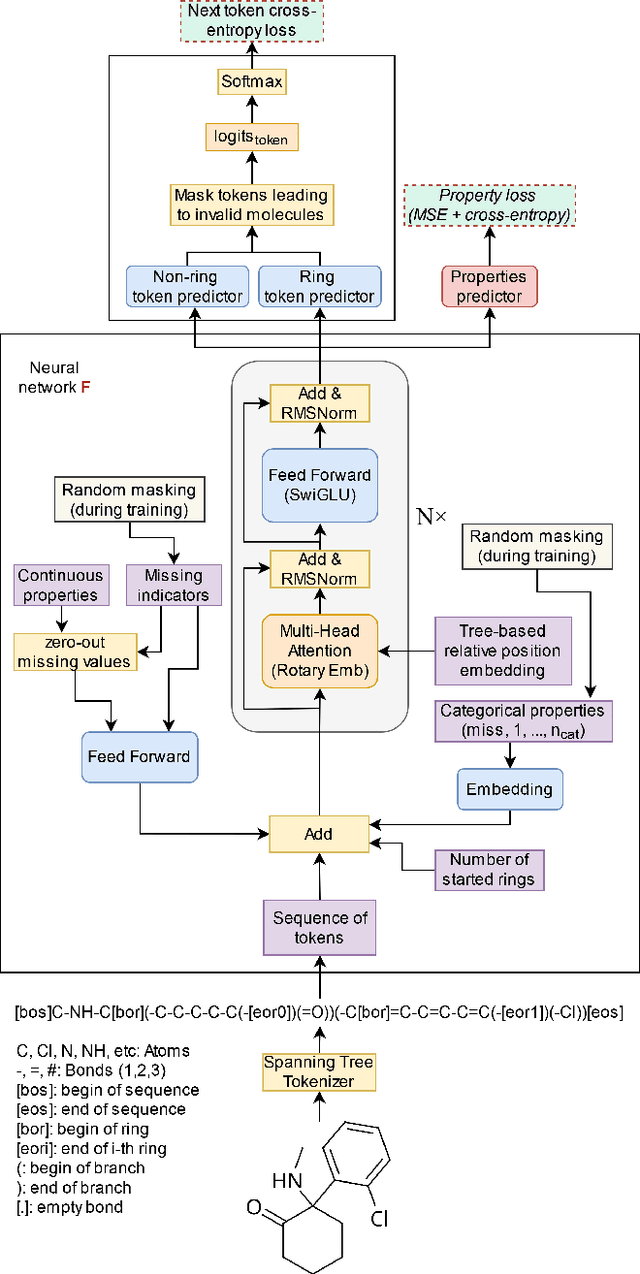
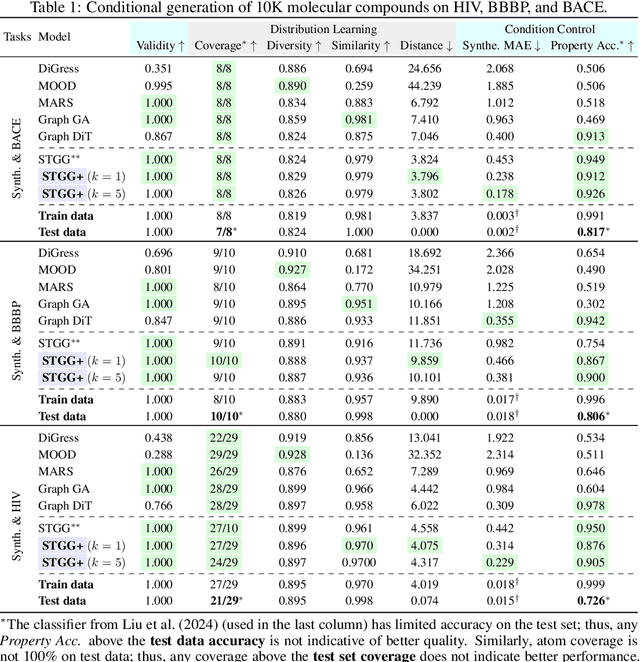
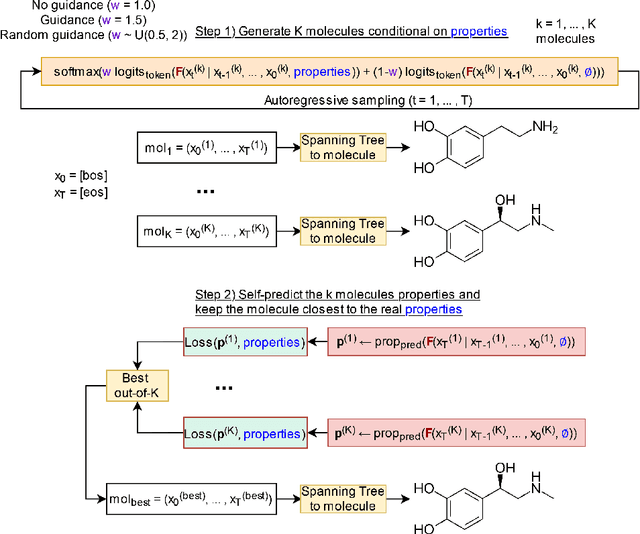
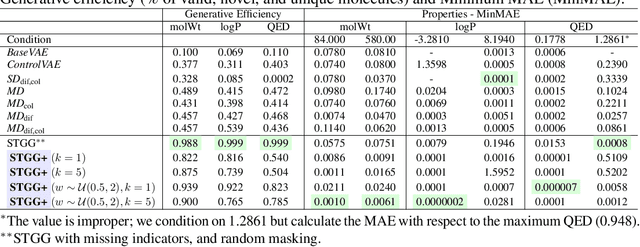
Abstract:Generating novel molecules is challenging, with most representations leading to generative models producing many invalid molecules. Spanning Tree-based Graph Generation (STGG) is a promising approach to ensure the generation of valid molecules, outperforming state-of-the-art SMILES and graph diffusion models for unconditional generation. In the real world, we want to be able to generate molecules conditional on one or multiple desired properties rather than unconditionally. Thus, in this work, we extend STGG to multi-property-conditional generation. Our approach, STGG+, incorporates a modern Transformer architecture, random masking of properties during training (enabling conditioning on any subset of properties and classifier-free guidance), an auxiliary property-prediction loss (allowing the model to self-criticize molecules and select the best ones), and other improvements. We show that STGG+ achieves state-of-the-art performance on in-distribution and out-of-distribution conditional generation, and reward maximization.
String-based Molecule Generation via Multi-decoder VAE
Aug 23, 2022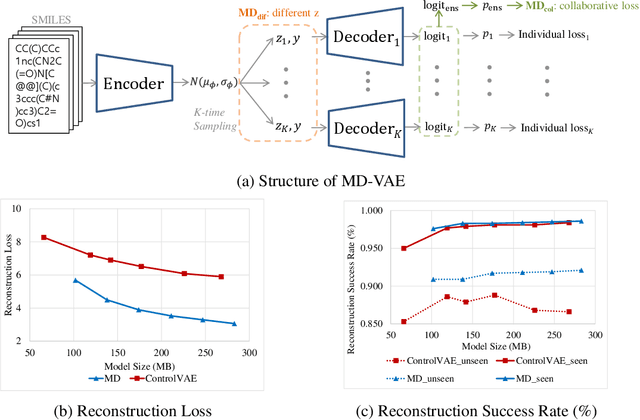
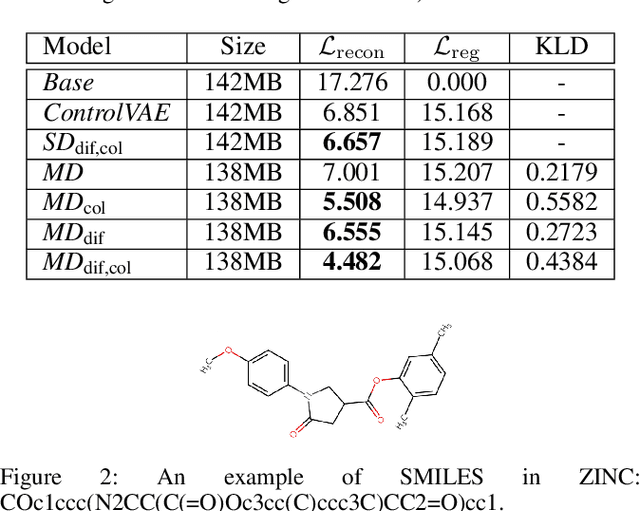
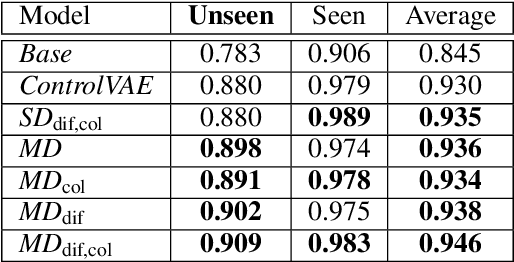

Abstract:In this paper, we investigate the problem of string-based molecular generation via variational autoencoders (VAEs) that have served a popular generative approach for various tasks in artificial intelligence. We propose a simple, yet effective idea to improve the performance of VAE for the task. Our main idea is to maintain multiple decoders while sharing a single encoder, i.e., it is a type of ensemble techniques. Here, we first found that training each decoder independently may not be effective as the bias of the ensemble decoder increases severely under its auto-regressive inference. To maintain both small bias and variance of the ensemble model, our proposed technique is two-fold: (a) a different latent variable is sampled for each decoder (from estimated mean and variance offered by the shared encoder) to encourage diverse characteristics of decoders and (b) a collaborative loss is used during training to control the aggregated quality of decoders using different latent variables. In our experiments, the proposed VAE model particularly performs well for generating a sample from out-of-domain distribution.
 Add to Chrome
Add to Chrome Add to Firefox
Add to Firefox Add to Edge
Add to Edge